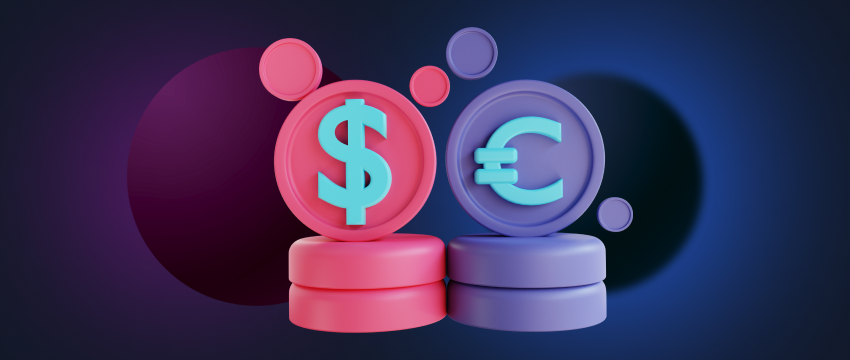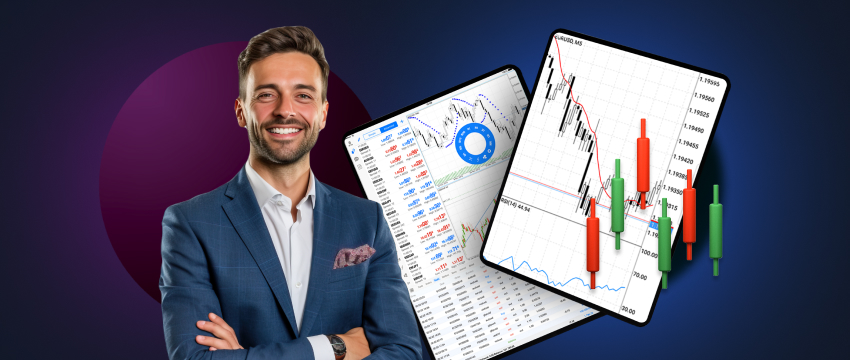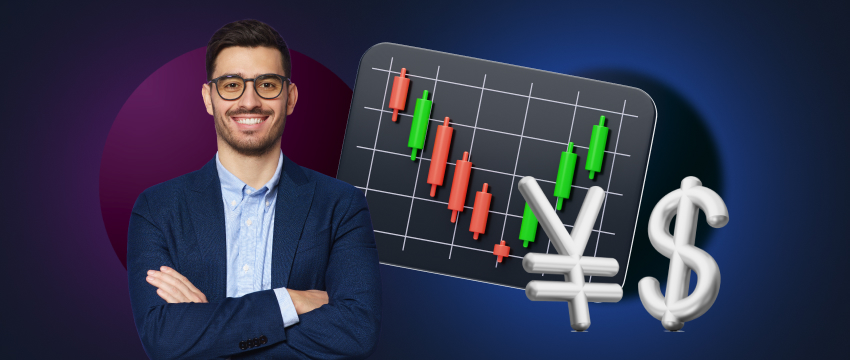A currency pair quotes the value of one currency against the other. We call the first currency in the pair the base currency and the second currency is the quote currency. In this article, we’ll look at everything related to currency pairs, including the most traded currency pairs, why traders trade these pairs and more.

Understanding currency pairs
Traders trade forex trading pairs in the forex market, also known as the foreign exchange market. The forex market is the largest financial market as well as the most liquid. The forex market allows for the buying, selling, exchanging, and speculation of currencies. It enables the global trading and investment of currencies through currency conversion. The market operates 24 hours a day, five days a week.
In all forex trades, traders buy one currency while selling another, treating the currency pair itself as a single unit—an instrument that they either buy or sell. You buy the base currency and sell the quote currency when you buy a forex trading pair from a forex broker. On the other hand, when you sell the currency pair, you sell the base currency and buy the quote currency.
Currencies are traded in pairs
Traders trade currencies in pairs. For instance, in EUR/USD, the base currency (EUR) is traded against the quote currency (USD).
Currency pairs are quoted based on their bid (buy) and ask (sell) prices. The bid price is the price that the trader is willing to sell the base currency for. The asking price is the lowest price at which a base currency can be bought.
The most commonly traded currencies
There are 180 currencies worldwide but not all of them are actively traded. The most common forex trading pair includes either the US Dollar or the Euro. Other popular pairs include the Japanese Yen, the Australian dollar, the Swiss franc, the Chinese Yuan, the Canadian dollar, and the British pound.
Currencies are always traded in pairs; when a trader buys or sells one, he’s buying or selling another at the same time. Currency pairs consist of a base currency (on the left) and a quote currency (on the right).
Forex trading pairs are split into three categories, the majors, the exotics, and the crosses. While all major currency pairs include the US Dollar, cross-currency pairs do not. Exotic currency pairs normally include one major currency and a currency from one of the world’s emerging markets.
The 7 major currency pairs always include the US Dollar; these pairs have high liquidity and the most frequent price movements, providing increased trading opportunities. They are EUR/USD, GPB/USD, USD/CAD, NZD/USD, USD/JPY, USD/CHF, and AUD/USD.
Cross-currency pairs include any two of the world’s major currencies except the US Dollar. The most actively traded cross-currency pairs include the EUR, GBP, and JPY. Examples include EUR/SEK, EUR/JPY, CAD/JPY, GBP/CHF, NZD/CAD, etc.
As already mentioned, exotic forex trading pairs include a major currency alongside a currency from an emerging market. Some of these are USD/BRL, USD/ZAR, USD/MXN, USD/SAR, and others.

Common currency pairs
Traders can trade almost any country’s currency, but they tend to trade some currency pairs more frequently than others. All the primary forex trading pairs include the USD.
Some of the most common forex trading pairs include the following:
- EUR/USD (Euro/US dollar)
- GBP/USD (British pound/US dollar)
- USD/JPY (US dollar/Japanese yen)
- AUD/USD (Australian dollar/US dollar)
- USD/CAD (US dollar/Canadian dollar)
- EUR/GBP (euro/British pound)
- USD/CHF (US dollar/Swiss franc)
- NZD/USD (New Zealand dollar/US dollar)
- USD/KRW (US dollar/South Korean won)
- USD/HKD (US dollar/Hong Kong dollar)
Major currency pairs
Traders actively trade the major currency pairs in the forex market. One of the widely traded currency pairs is EUR/USD. It holds the distinction of being the most liquid forex trading pair globally due to its high trading volume. The other three most actively traded forex trading pairs in the forex market are the USD/JPY, USD/CHF, and GBP/USD.
Traders refer to USD/CAD, AUD/USD, and NZD/USD as commodity pairs. These currencies are usually from countries that are major producers and exporters of commodities and tend to be sensitive to fluctuations in commodity prices.
Exotic currency pairs
Exotic currency pairs include a major currency and one from a developing or emerging market. These pairs often experience low trading volume and lack liquidity. Exotic currencies exhibit high volatility and sensitivity to fluctuations in their country’s economy.
Some exotic currencies include Turkish lira, Thai Baht, Iraqi dinar, South African Rand, Mexican peso, etc.
Exotic forex trading pairs include the following:
- EUR/TRY (Euro/Turkish lira)
- USD/ZAR (US Dollar/South Africa Rand)
- EUR/MXN (Euro/Mexican peso)
- EUR/RON (Euro/Romanian Leu)
- USD/HUF (US dollar/Hungarian forint)
- TRY/JPY (Turkish lira/Japanese yen)
- GBP/PLN (British Pound/Polish Zloty)
Why are the major pairs the most widely traded?
Several reasons explain why traders widely trade the major pairs:
- High liquidity: Major forex trading pairs have the highest trading volumes in the forex market. This high liquidity guarantees there are enough buyers and sellers available at any given time, making it easier for traders to execute trades without significant price fluctuations.
- Tighter spreads: Due to high liquidity, major pairs usually have smaller spreads between the bid and ask prices compared to exotic pairs. This means transaction costs are lower.
- Ease of entry and exit: The high trading volume allows traders to enter and exit positions quickly and efficiently.
- Lower slippage risk: With high liquidity and trading volume, major currency pairs typically experience lower slippage compared to exotic pairs. While slippage can occur in major pairs, it is generally less than with exotic pairs.

Forex trading pairs via CFDs
Traders can trade currency pairs using CFDs (Contracts for Difference). The CFD is an agreement between two parties (e.g. a forex trader and a CFD forex broker) to exchange the difference between an asset’s opening and closing price. As CFDs are derivative instruments, the trader does not take ownership of the asset. CFD forex brokers profit through spreads (the difference between the ask and the bid price).
CFDs commonly offer higher leverage compared to traditional trading, but leverage is very volatile and comes with very high risk. Forex traders typically base their choice of leverage on their risk tolerance and the amount of money they’re willing to risk. If not handled properly, leverage can result in traders losing large sums of money.
Trading currency pairs with T4Trade
T4Trade offers traders a flexible and secure trading environment, providing competitive spreads, flexible leverage, and fast withdrawals and deposits.
With T4Trade, traders have access to more than 80 currency pairs, including the most traded forex trading pairs such as EUR/USD, GBP/USD or USD/JPY and can enjoy tight spreads and low costs. T4Trade also offers a range of account types for traders to choose from.
These accounts cater to the diverse needs of global traders, allowing them to choose one that best fits their goals and trading experience. In addition, the broker’s top-tier multilingual customer support team is available 24/5 to assist and solve any queries via email or Live Chat.
T4Trade designed its MT4 platform to provide flexibility, enabling traders to execute trades efficiently. Furthermore, T4Trade offers a range of educational resources through its Academy to support traders in making informed decisions.
From market analysis to educational webinars, podcasts and trading videos, traders have access to valuable insights and knowledge to enhance their trading experience.
免责声明: This material is for general informational and educational purposes only and should not be considered investment advice or an investment recommendation. T4Trade is not responsible for any data provided by third parties referenced or hyperlinked in this communication.




